How to Fertilize Hibiscus
Hibiscus is an incredibly beautiful plant and a favorite addition to most gardens. As with most plants, there’s such a broad spectrum of colors, sizes, and growing methods to explore when you first start cultivating hibiscus. You could even grow hibiscus as a bonsai if you wanted to, and if you’ve ever seen a hibiscus bonsai, you’d definitely want to.
But in order to ensure that your hibiscus plant thrives and produces the beguiling colors it’s so famous for, you need to fertilize your plant the right way and with the right nutrients. Fertilizing plants can sometimes be a bit of a headache, especially if you have numerous types and species of plants in your garden. Not all fertilizers are appropriate to use on all plants, and some plants, like hibiscus, can be a bit finicky.
So to try and make all that a little easier for you, we’ve set up this comprehensive guide to fertilizing hibiscus.
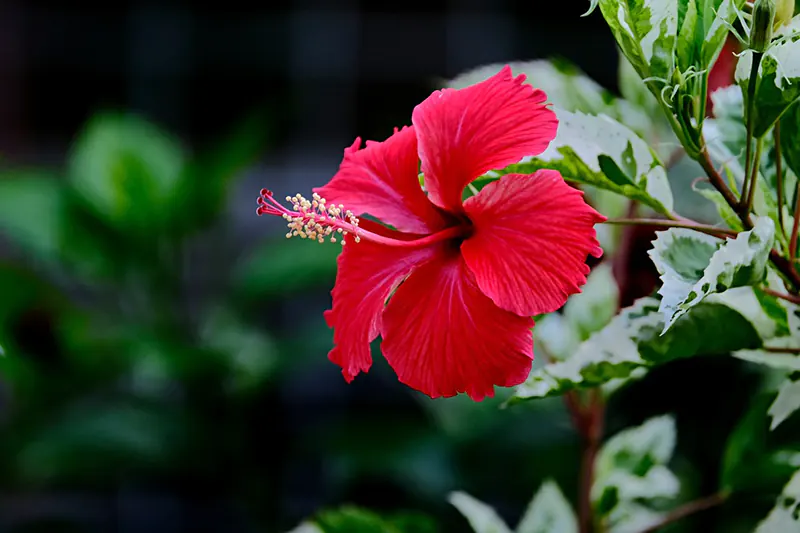
Hibiscus Fertilizer – The Basics
The first thing you learn when you start familiarizing yourself with fertilizer is the importance of what we call the NPK numbers. These three numbers appear on the packaging of all good fertilizers as N-P-K. Here, each letter is replaced by a number denoting concentration, and each letter stands for one of the three essential nutrients that plants need; Nitrogen, Phosphorus, and Potassium. Each of these performs a specific set of functions to support the growth and development of your plants, as we explain in detail in our Bougainvillea Fertilizer Guide.
Each type of plant will have a different NPK value because most differ in their requirements of concentrations of the three essential nutrients. So you’ll have some fertilizers that carry a value of, for instance, 5 -5 -5, which means that all three nutrients make up the same percentages. While equal nutrient ratios may be good for some plants, they’re far from ideal for hibiscus. This is because hibiscus is far more reliant on potassium than any of the other nutrients, and giving it the same concentrations of the other nutrients may do more harm than good.
According to the majority of professional hibiscus cultivators, the ideal ratio of the NPK nutrients is 3 -1 -4. That is to say, a moderate percentage of nitrogen, a low percentage of phosphorus, and a high percentage of potassium.
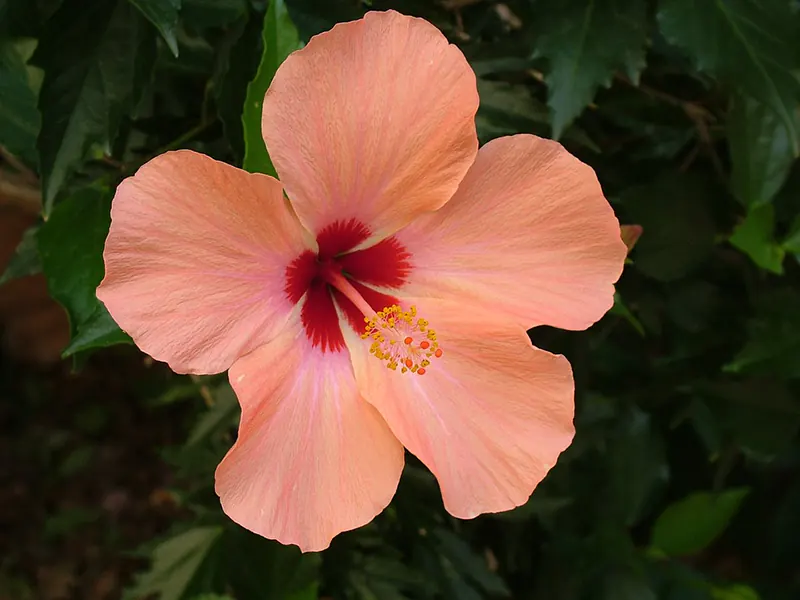
When Should You Fertilize Hibiscus?
Hibiscus is a fairly hardy plant, but even so, it wouldn’t be a good idea to be too heavy-handed with your fertilizer. The best way to fertilize hibiscus is usually summarized as frequently but lightly, but what does that actually mean?
There are two main types of fertilizer: Slow-release and water-soluble.
Slow-release hibiscus fertilizers do exactly what their name implies; they release the necessary concentrations of nitrogen, phosphorus, and potassium slowly over an extended period of time. This way, your plant doesn’t get given more than it can handle, and you can fertilize less often without worrying that your plant isn’t getting what it needs. Win-win.
Water-soluble fertilizers are applied more frequently and need to be diluted before being given to your plants.
If you choose to go with a slow-release fertilizer, you should typically fertilize your hibiscus four times a year. The best times to fertilize with a slow-release formulation are:
- Early in the Spring
- Once your hibiscus has concluded its first bloom
- In the middle of Summer
- Early in the Winter
Water-soluble fertilizer, as stated above, requires a little more attention. Here, you’d fertilize with a diluted solution once every two weeks in the Spring and Summer and then again once every four weeks in the Fall and Winter.
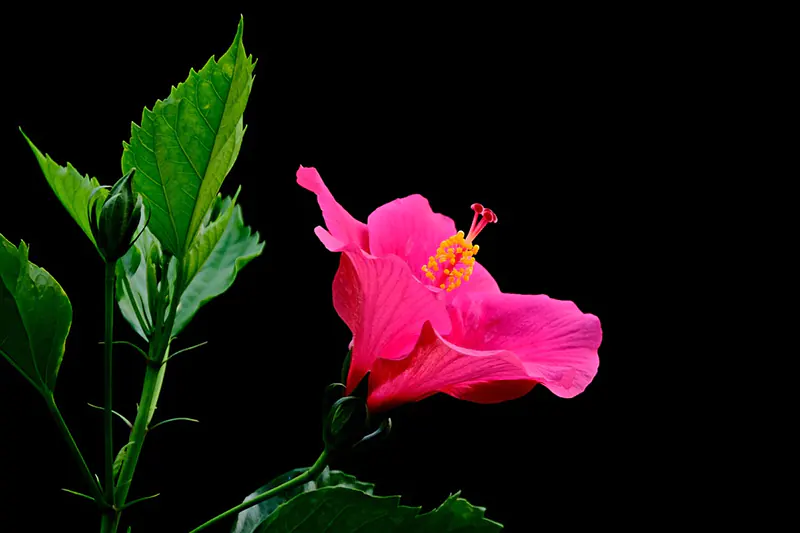
What Fertilizer Should You Use?
I wouldn’t accomplish much by telling you that you need to fertilize your hibiscus but not giving you any kind of examples of good fertilizer. Below, we’ll look at a few of the best hibiscus fertilizers you can pick up at your local hardware store or nursery, as well as a few handy homemade solutions that should get your hibiscus thriving and blooming in no time.
Commercial Hibiscus Fertilizers
If you can afford it, dedicated hibiscus fertilizer is usually your best bet. The best thing about commercial fertilizers is that you know the exact ratio that each of the nutrients take up. That way, you can match your fertilizer up exactly to the needs of your hibiscus plant. This is sort of like a tailored approach to hibiscus care. Yes, you could essentially use any fertilizer that is higher in potassium than the other nutrients and hope for the best, but when a bag of fertilizer says hibiscus on it, you know you’re giving your plant something that has been specifically formulated to give it the best chance.
If you’re new to horticulture or can’t really justify the expense of high-quality hibiscus-specific fertilizer at this moment in time, stick with me because, in the next section, I’m going to give you great tips on household products you can use instead.
Down to Earth Organic Neem Seed Meal Fertilizers
Ratio: 6 -1 -2
This is a specially formulated 6 -1 -2 option produced from cold-pressed seeds from the Neem tree. This formulation is versatile enough to be used in numerous different ways with numerous plants, especially hibiscus. You can either mix it directly into your potting mix or ground soil for a slow-release alternative or steep it as a tea for much more rapid results.
If you opt for the tea method, you can spray this formulation directly onto the foliage of your hibiscus or hibiscus bonsai. The incredible thing about Neem tree products is that they not only fertilize your hibiscus but also protect your plant from harmful pests while leaving the good little hibiscus helpers to do what they do.
This product wasn’t made with any synthetic materials or stimulants, so it truly is down to earth, organic, and filled to the brim with natural goodness.
EarthPods Hibiscus Plant Food
Ratio: 0.2 -0.2 – 0.4
These eco-conscious capsules contain equal amounts of nitrogen and phosphorus. While this isn’t exactly the ratio we listed previously as the optimal concentration, it’s specifically formulated for hibiscus plants and bonsai trees and contains enough potassium to give your plant exactly what it needs to thrive.
This product is specifically geared toward promoting healthy root growth and the most sublime vibrance in your hibiscus plant. While these capsules are aimed at potted plants specifically, you should be perfectly able to use them on your hibiscus garden beds as well. The best thing about this product is that it comes in easily measurable capsules, so you’re not likely to encounter any spillage or messes while working with it. You’re also guaranteed easy storage as the capsules have no odor. You could literally store them in your kitchen!
Earth Organic Bud & Bloom Hibiscus Fertilizer
Ratio: 3 -9 -4
You’re looking at the ratio and thinking that something doesn’t make sense. Those ratios are surely far too high for hibiscus, aren’t they? Well, no. Not in this case. Not all fertilizers are for any occasion. This is one of those highly specialized hibiscus fertilizers formulated for soil lacking one particular nutrient. In this case, that nutrient is phosphorus.
Unfortunately, sometimes soils get depleted of certain nutrients essential to plant growth. A simple soil test will determine what your nutrient concentrations are and whether you may need a product like this to replenish any nutrients lost over time.
If your soil has a phosphorus deficiency, all you need to do is work ½ -2 cups of Dr. Earth Organic Bud & Bloom Hibiscus Fertilizer into your soil for new plantings. If your hibiscus is already established in the soil, the recommended dosage is determined based on the measurement of soil around your plant in cubic feet. You’ll find a handy guide on the label to make this easier.
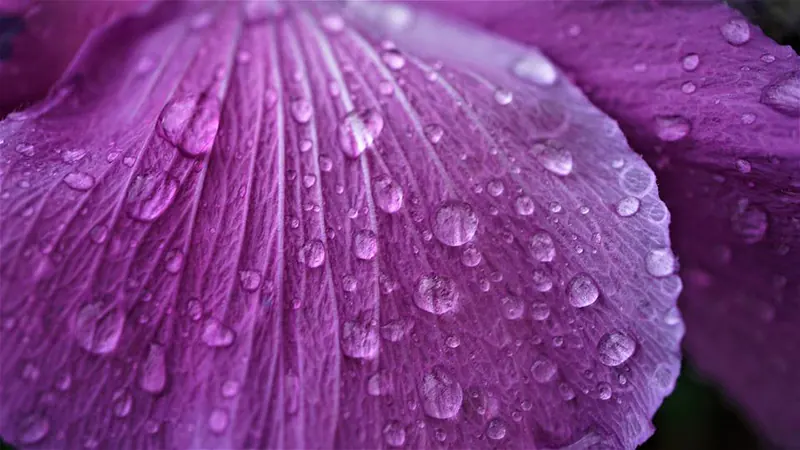
Homemade Hibiscus Fertilizers
There’s something to appreciate about homemade fertilizer options. I remember from my early days of growing plants; I didn’t have the money to spend on expensive commercial fertilizers. My Google search history around the time was saturated with the words ‘free’, ‘homemade,’ and ‘household products’ in relation to my city-wide searches for anything to do with my plants. I must admit, part of me still looks for frugal solutions. While there is something to be said about sparing no expense on your hobbies, passions, and that which ultimately brings you peace, there’s also an argument that if a cheaper option does the job just the same, why spend extra?
With that in mind, here are some of my favorite homemade fertilizer solutions for hibiscus.
Coffee Grounds
Spent coffee grounds are incredible sources of nitrogen and potassium for plants, specifically plants like hibiscus. Because of its acidic nature, however, it’s important not to use too much at a time, and keep in mind that you don’t want to overload your hibiscus with nitrogen and cause nitrogen burn. That said, now your morning cuppa has a deeper purpose.
Blackstrap Molasses
Blackstrap molasses is another excellent source of nutrients for hibiscus. Rich in magnesium, iron, calcium, and potassium, blackstrap molasses can be mixed with water and then sprayed on the soil around your hibiscus plant. With any kind of additive, you don’t want to spray directly onto the plant unless you’re specifically targeting pests. We tackle that topic in detail in What Bug is on My Bougainvillea?
Wood Ash
Wood ash is rich in potassium and thus works as an excellent nutrient source for potassium-loving plants like hibiscus. The best way to use this hibiscus superfood is to sprinkle it into your compost.
Vinegar
Vinegar is high in sodium and potassium and, as such, is the perfect addition to your hibiscus care regimen. You can use vinegar in place of conventional fertilizers, provided you use it the correct way. All you need to do is dilute one cup of vinegar to one gallon of water and then pour the vinegar solution around the hibiscus roots. This is another solution that you definitely don’t want touching the leaves or flowers, so be careful when you use it.
Banana Peels
Bananas also contain high concentrations of potassium, as do their peels. They also have moderate concentrations of nitrogen, which is the kind of ratio you’re looking for in fertilizer for hibiscus. There are numerous ways you can use bananas for your hibiscus. If you eat the banana yourself and are left with the peels, put them to good use in your compost heap, and use the compost for your hibiscus.
You could also opt to use the entire banana, peel, and all. Here, you’d usually chop the banana up and arrange it on the soil within the dripline. The dripline is the area of the soil around your hibiscus plant that is directly in the shade of the outermost leaves.
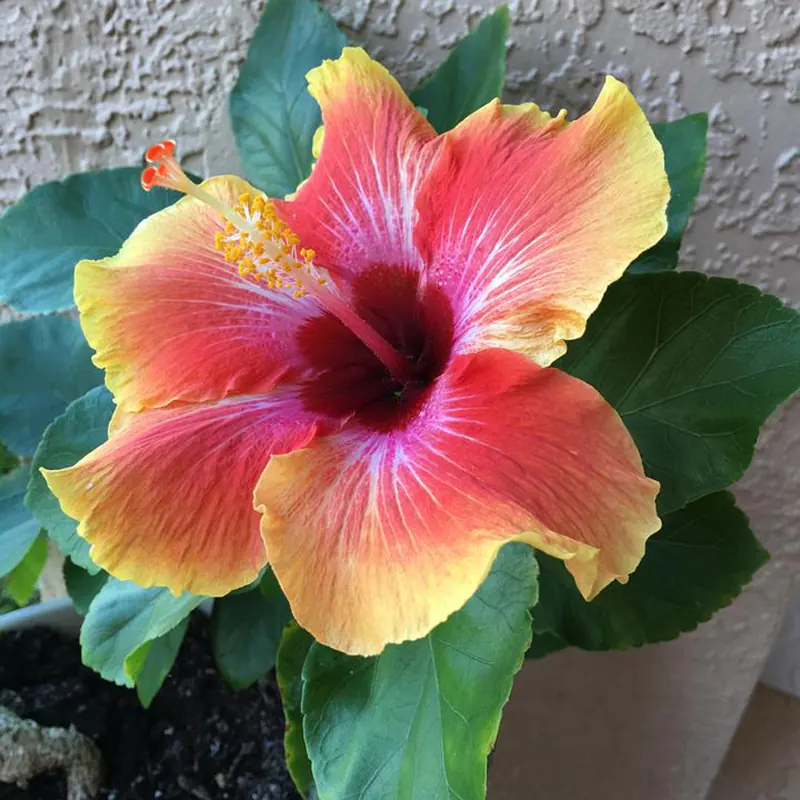
Tips and Tricks for Fertilizing Hibiscus
Now that we’ve concluded with the most important aspects of fertilizing your hibiscus plants, I thought I’d give you a brief list of tips and tricks not everyone knows that should greatly increase the efficacy of your fertilizing efforts.
Tip #1. Remember the edges
So many people concentrate the fertilizer they apply to their potted hibiscus plants and bonsais in the center where the stem is. This chips away at the efficacy of whatever you apply because the nutrients aren’t making it to the wider root system. Instead, remember to apply your fertilizer to the outer edges of the pot too. This ensures that the nutrients travel down to where the roots are. Do this with your garden-planted hibiscus as well. In this case, look at how far the plant’s canopy extends to gauge more or less where the root system ends.
Tip #2. Want more blooms?
Phosphorus is a wonder drug when it comes to getting plants like hibiscus to bloom more vibrantly and fully. If your hibiscus plant or bonsai is growing well but not bearing the blooms the genus is so famous for, add a little more phosphorus into the equation.
Tip #3. Potting soil isn’t fertile
So many times, I hear people refer to potting soil and fertilizer as though they are interchangeable terms. Potting soil isn’t all that fertile. Primarily, good potting soil contains substances like peat moss, composted bark, perlite, and coco coir. These substances, on their own, are not fertile enough to provide any significant amount of nourishment. The main purpose of potting soil is to keep your hibiscus plant’s roots firmly in place and moist. You still need fertilizer if you have potting soil.
Tip #4. Help, my plant is burning
If you notice any amount of fertilizer burn on your plants, stop fertilizing. This condition presents as brown coloring on the edges of your hibiscus’ leaves. At the first sign of this, stop fertilizing for at least two weeks, use only clean, pure water on your plants, and when you start up with fertilizer again, use a diluted solution. If it happens again, repeat the process and then dilute the fertilizer even more. Repeat until you find a formulation that works.
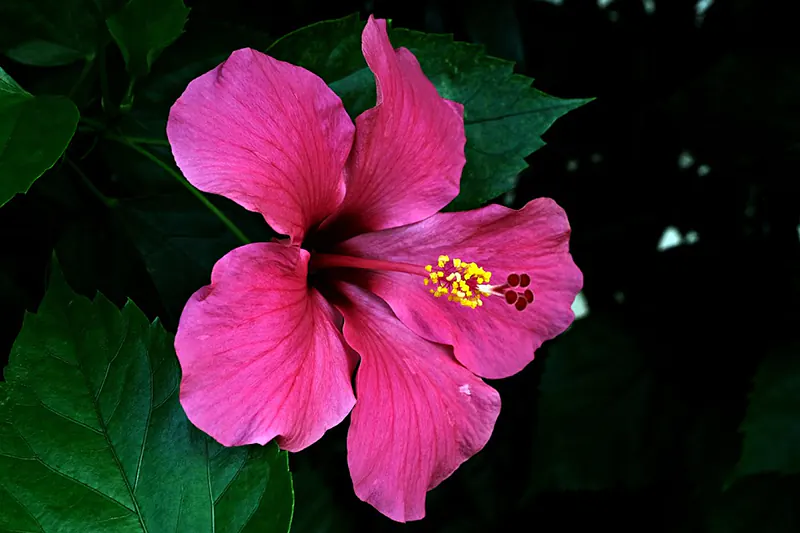
Final Word
Well, wasn’t this now a fun journey! I didn’t want to end up with a TL;DR situation, so I didn’t want to delve too deep into all of the subject matter. We do have an extensive list of fertilizer guides on the website, though, so feel free to explore the subject further! I hope that you use what we addressed in this article to increase the quality of life of your plants. And no doubt you would; no one grows plants because they hate nature and want to see it fail. We’re all doing our small bit in leaving this planet a little greener, more lush, and more vibrant than we found it. Hibiscus is definitely one of the most beautiful ways to achieve that goal.
If I could leave you with three key takeaways from this piece:
- The fertilizer you use doesn’t have to be the most expensive on the market.
- Ratio is key to determining whether a product is a good fertilizer for your specific plant.
- Potassium is the most essential nutrient to give to your hibiscus.
Hibiscus Fertilizer FAQs
Bone meal typically speeds up the growth of young plants. It’s perfectly fine, and you are even encouraged to add bone meal into your potting soil, but it typically only contains phosphorus and calcium; you’ll still need to get your plant the potassium it needs.
Yes, provided it has the right concentrations to be used on hibiscus. Ratio is key. Although, typically, any plant food or fertilizer formulated for tropical flower plants should be perfectly well suited to hibiscus.
Yes. As long as you make sure that it doesn’t contain anything that would harm your hibiscus, you should be fine using more affordable fertilizer options. Try out the homemade alternatives above for a natural solution on a budget.
Yes. While the age and maturity of your bonsai determine how frequently you need to fertilize it, you definitely should fertilize bonsai trees. If your tree is indoors, fertilize all year round, with the same methods for any other hibiscus plant. If your bonsai is an outside tree, focus fertilizer on the growing season, From early in the Spring to the middle of Fall. The older the bonsai tree, the less it usually needs to be fertilized.







